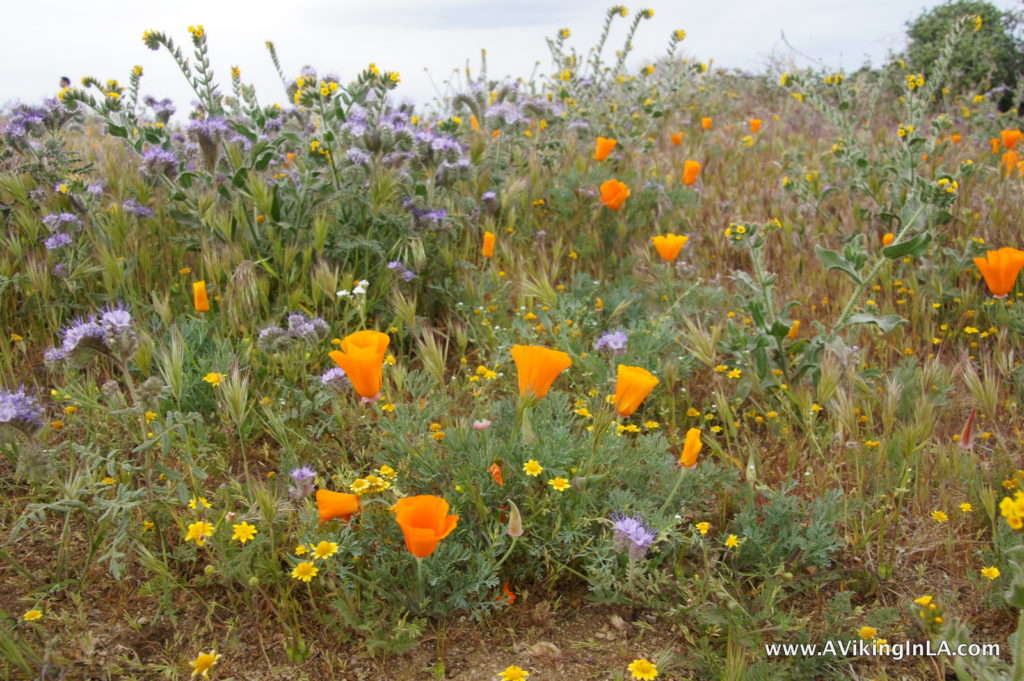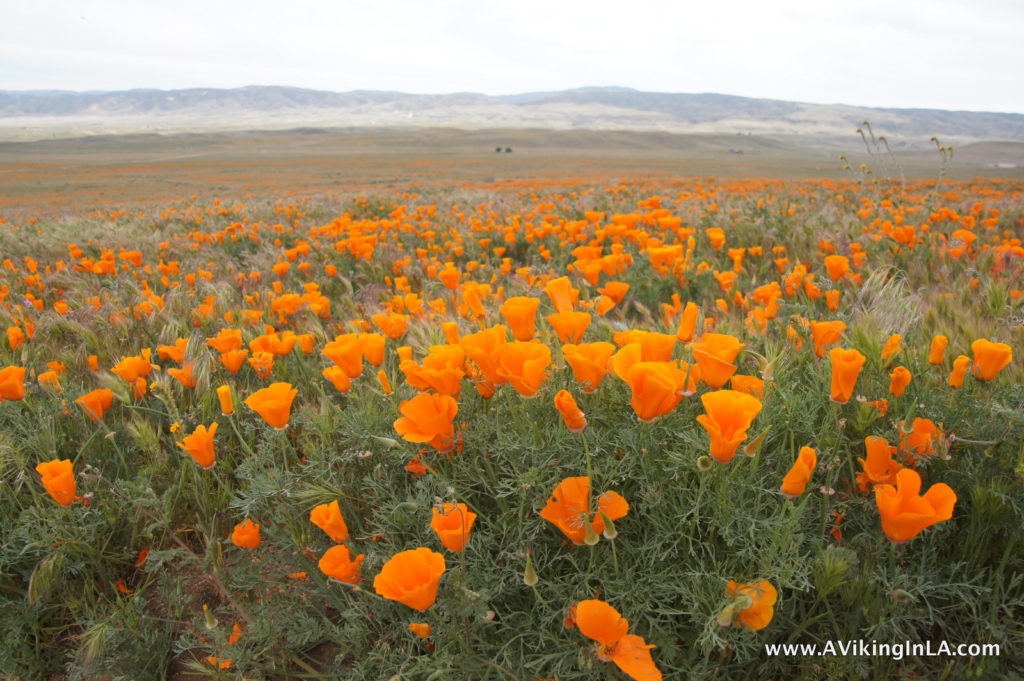
My wish to see the yearly California poppies finally came true. Every spring for years, when news of the upcoming poppy season and then pictures of the current bloom (some years better than others) would come out, I would yearn to see them in person. It wasn’t until we recently had a soccer tournament in Lancaster that I realized the poppy fields weren’t as far away as I had thought.
The Lancaster tournament was about a 75-minute drive north, and actually a beautiful drive once we got onto the Antelope Valley Freeway (Route 14). From Lancaster, Antelope Valley California Poppy Reserve was then only about 15 miles west. Our soccer tournament was too early in the season (end of February) to catch the poppies, but I knew then they were within reach.
We stayed in Los Angeles for Spring Break (first week of April), and I made a vow that we would see the poppies this year. The kids weren’t overly thrilled about the plan. They thought I should just be happy with the random poppies that had popped up around town along the roadsides. I powered through with my wish for the whole family to go, and as luck would have it, a friend of Sonny’s came along for the trip as well which was a nice distraction.
There had been news that poppy blooms were expected to be “moderate” this year and not the “jaw-dropping orange carpets” last seen in 2008 and 2010, but that didn’t stop interested people from making the trek. The park was advising visitors to come on weekdays instead of weekends due to the crowds and congested parking, so we headed to the reserve on a Thursday. The traffic cooperated and we were there in the minimum time anticipated. It was windy, as the park’s website had warned it often is, and cloudy, so we were grateful for sweatshirts we had brought along.
We began our visit at the interpretive center. It has an orientation video, some wildflower and wildlife exhibits, a gallery of botanical watercolor paintings, and a gift shop. Here I picked up a map of the trails. I also received one of the newly arrived park brochures that staff members were very excited to be able to hand out. I asked if they had a route to recommend, and of course they did, and then we were on our way.
The reserve consists of eight miles of trails through hills and fields of wildflowers with benches along way to enjoy the views. Our hike was a 3-mile loop on wide dirt paths with gentle to moderate slopes, nothing difficult at all. From the interpretive center, we headed to Kitanemuk Vista Point. Off in the distance, we saw fields of yellow and orange; and along the trail, we saw a wide variety of colorful wildflowers.
The most amazing stretch of poppies was after the vista point and along the Antelope Trail Loop (between North and South trails). It was not a long stretch, but the poppies were close to the trail and abundant and beautiful. We felt lucky to have been guided to this particular area because it made the whole trip worth it.
The poppies weren’t as overall abundant and awe-inspiring as we were expecting, but I believe that was partly due to the weather that day. Since it was windy and cloudy and cool, all the poppies weren’t as open as they could be. Poppies curl up in cold weather.
At the reserve, there are strict rules to stay ON the paths and OUT of the poppy fields. Sadly, many people ignored or were unaware of those rules, and new paths had been created upon trampled flowers and grasses. In particular, I was deeply disturbed by two girls taking pictures of each other doing yoga poses in the field. For people who really want to traipse among the poppies, there’s a stretch along the main road leading to the entrance to the reserve where people can just park off the road and head onto land filled with poppies.
The California poppy was named California’s state flower in 1903, and coincidentally, April 6, the day we visited the reserve, is officially “California Poppy Day” (declared in 2010). “On California Poppy Day, all public schools and educational institutions are encouraged to conduct exercises honoring the California Poppy, including instruction about native plants, particularly the California Poppy, and the economic and aesthetic value of wildflowers; promoting responsible behavior toward our natural resources and a spirit of protection toward them; and emphasizing the value of natural resources and conservation of natural resources.”
Here’s some more interesting historical information about California’s state flower from the reserve’s brochure:
Staff members anticipate the bloom to possibly last until late April or early May depending on rain fall. Make sure to check Antelope Valley California Poppy Reserve’s website for bloom status updates before heading out or call Poppy Reserve Wildflower Hotline at
(661) 724-1180.
Ideally, while in Antelope Valley, I would have liked to have added a visit to Arthur B. Ripley Desert Woodland to our outing. The woodland is just seven miles west of Antelope Valley California Poppy Reserve. According to its website, it “protects and preserves an impressive stand of native Joshuas and junipers which once grew in great abundance throughout the valley.” Beautiful and interesting pictures can be seen on the Arthur B. Ripley Desert Woodland State Park Pinterest page. I’ll keep it mind for my next trip to see the poppies.











